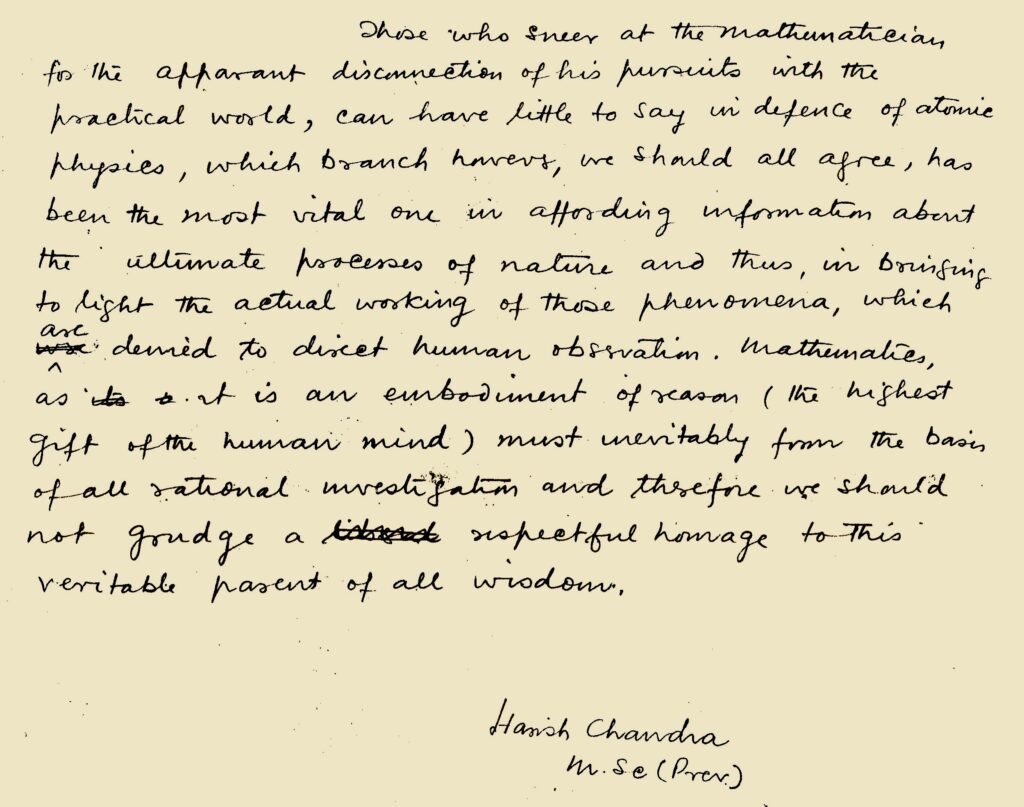
Therefore, the images reproduced here from the original handwritten version, are of certain historic signi-ficance as we enter the birth centenary year of a great mathematician of our times, for Harish-Chandra was born on 11 October 1923 in the industrial town of Kanpur.
The 15-page original handwritten manuscript had come into the safekeeping of Vijay Thiruvady, grandson of the celebrated physicist Kariamanikkam Srinivasa Krishnan, who has carefully preserved and archived the many important documents that are in his possession. Dipankar Basumallik, the biographer of Krishnan,1 who had seen it at the home of Vijay Thiruvady in Bangalore brought it to our notice. Publishing this historical document would as well be a tribute to Thiruvady’s sense of devotion to his grandfather’s documents, and to Basumallik’s discerning study of the Krishnan papers.
Historical preamble and the context
Presenting him in its Winter 1962–63 edition, Columbia College Today, the alumni magazine of the undergraduate liberal arts college at Columbia University wrote, “Harish-Chandra is possibly the finest mathematician that India has produced since Srinivasa Ramanujan’’. Then a faculty member in Columbia’s mathematics department, Harish-Chandra was to soon move over to the Institute for Advanced Study in Princeton which would be his work place for the next twenty years of his life until his demise. Reflecting on his career in these two places, this is what his wife Lily Harish-Chandra had to say:2
Looking back on his early days, at Dirac’s 80th birthday conference3 in 1983, Harish-Chandra wrote,
K.S. Krishnan, who was one of his influential teachers in Allahabad, directed Harish-Chandra to the Indian Institute of Science in Bangalore after his M.Sc., where he began working with Homi Jehangir Bhabha. Bhabha knew Dirac from his time in Cambridge, which resulted in a fortuitous turn of events for Harish-Chandra. For, in the same recollection Harish-Chandra writes:
This is also how he acquired the hyphen in his name, bestowed by an overzealous copy editor, which he decided to stick with for the rest of his life, possibly an indication of the formation of an academic identity still in progress.
 |
 |
The M.Sc. manuscript
In conformity with all his previous scholastic records, Harish-Chandra writes his name without the hyphen at the end of the article. This may arguably be the only scientific paper in which his name appears without the hyphen.
There is ample evidence in this paper that eloquently reflects the intensity and candour with which Harish-Chandra shared his thoughts. The reverential pedestal on which he places mathematics, and the epithets he uses—`the mother of all sciences’, `an embodiment of reason’, `the highest gift of the human mind’—capture the cultural streak he is coming from. This is in contrast to some of the other alluded references to mathematics, part of a rhetorical tradition of identifying the relationship between mathematics and the sciences.
Widely known as the author of the much-acclaimed classic Men of Mathematics, the popular writer Eric Temple Bell had earlier written a popular exposition of the great strides of mathematics in the late 19th and the early 20th centuries, and titled it The Queen of the Sciences. It was Carl Friedrich Gauss, the great German mathematician, who, in the early 19th century, called mathematics the “queen of the sciences”. Dwelling on the irreplaceable role of mathematical language for advancement of physical theories, Bell titled his 1937 book, The Handmaiden of the Sciences.
Beginning with the emphatic positing of mathematics as the `mother of all sciences’, Harish-Chandra’s 1942 manuscript is a strongly worded retort to such references to mathematics as a servant of the sciences:
Youthful zest of his formative years playing up, he comes down hard on the reference to mathematics as the handmaiden of the sciences. Taking the shining example of the Dirac equation, he is forceful in his exposition of the method of matrix algebra as “a form of symbolic logic for representing physical postulates in mathematical language and converting them into extremely handy instruments for advancement of the theory’’:
Harish-Chandra’s repeated and consistent use of the unusual nomenclature `algebric numbers’ in this paper is curious and somewhat intriguing. To correct it to the adjective `algebraic’ would be restrictive; for, in the context of his discussion, the particular restriction does not seem necessary. One cannot but wonder, therefore, that his usage of the term was deliberate, used in the larger context of numbers with an algebraic structure, such as the field of real or complex numbers. Even at the risk of sounding fanciful, one is tempted here to speculate that he was possibly experimenting under the spell of the French language that he was freshly learning from his future mother-in-law, while studying in Allahabad; the usage in French being “algébrique’’. Even in English, the word algebraic is often used in larger contexts, as in algebraic geometry or algebraic topology, without any ambiguity; but when the word that follows is `numbers’, the mathematically restrictive usage kicks in!
Not ruling out the possibility of such varied sentiments simultaneously playing on in his mind, Harish-Chandra seems to overlook a certain point in the quoted text below where, in the parenthetical statement, he says that one need not worry about the order of operators in defining orthogonality:
Being a physics student thinking about the mathematical aspects he was expounding, his context indicates that he was likely looking at a qualifying restrictive situation like Hermitian operators, in which case the statement is fine as it is.
He concludes his charged essay with the following unmistakable words arguing for his view of mathematics as the mother of all sciences:
Harish-Chandra’s fascination with the Dirac equation never seems to have left him. “Nature conferred her approval on Dirac’s marvellous insight by the discovery of the positron’’, he wrote in his retrospective on his association with Dirac at his 80th birthday conference. This sentiment resonates in the following words of his wife Lily:
In his moving tribute, Harish-Chandra is graceful in acknowledging his mentor Dirac:
It is a quirk of fate that Harish-Chandra himself passed away on 16 October 1983, at the stroke of his sixtieth birthday, almost exactly a year before the demise of Dirac.\blacksquare
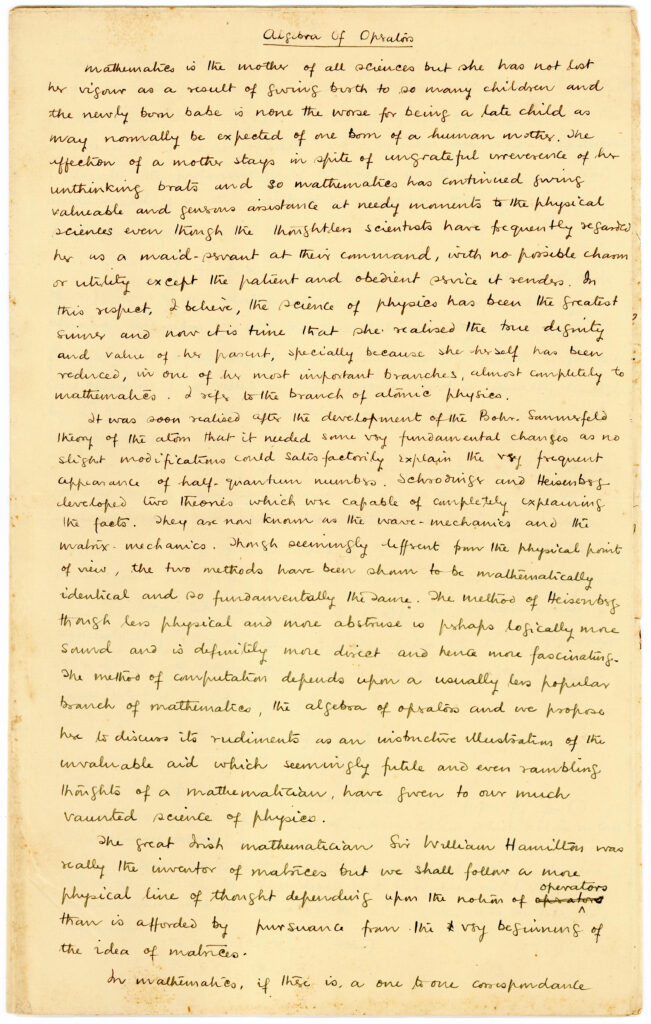
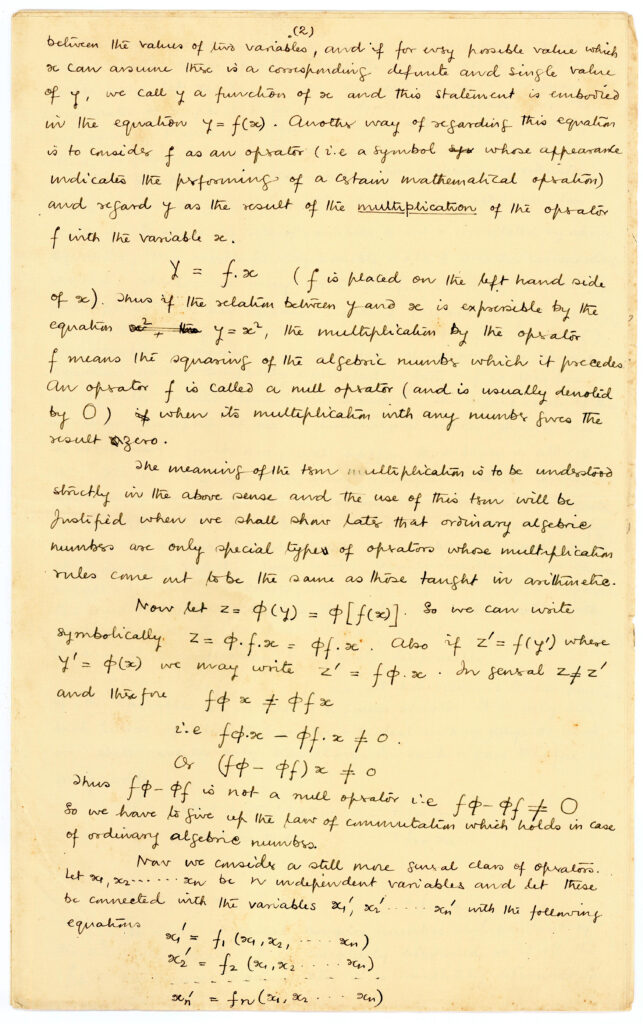
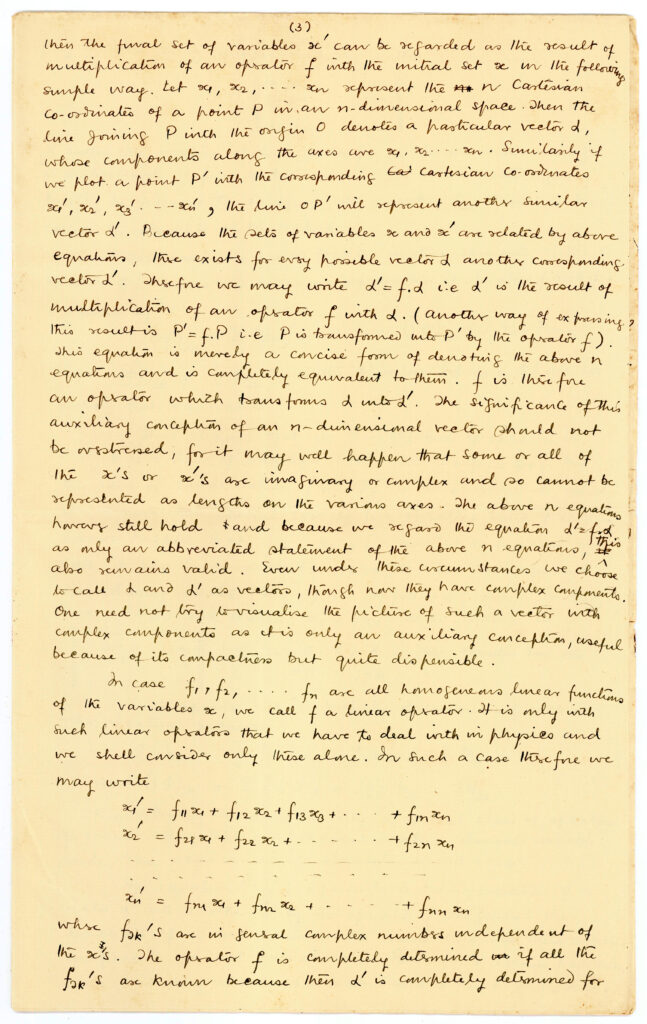
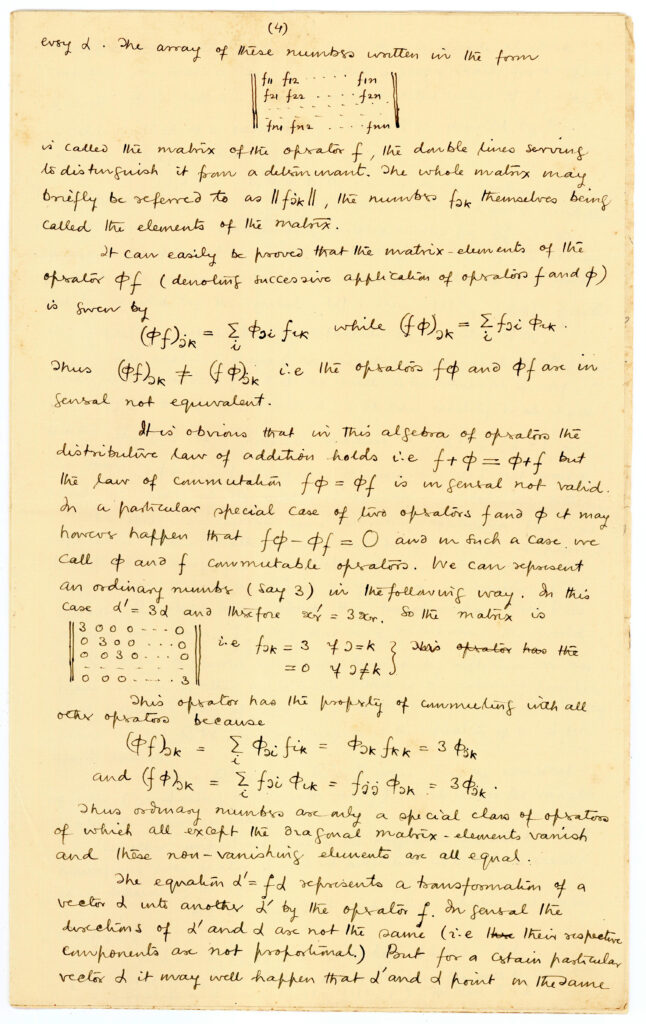
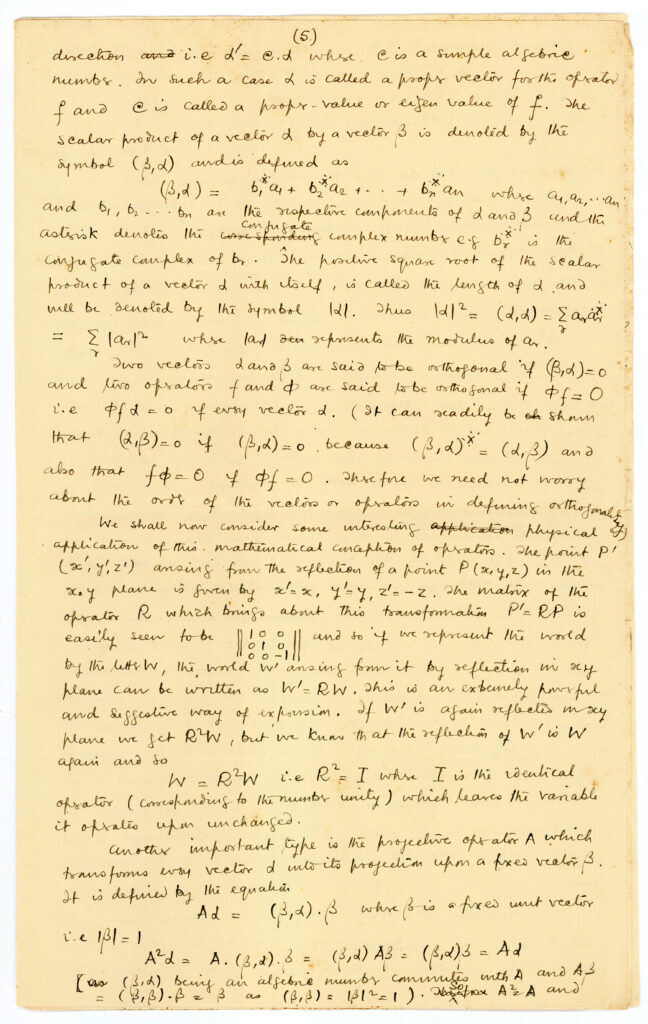
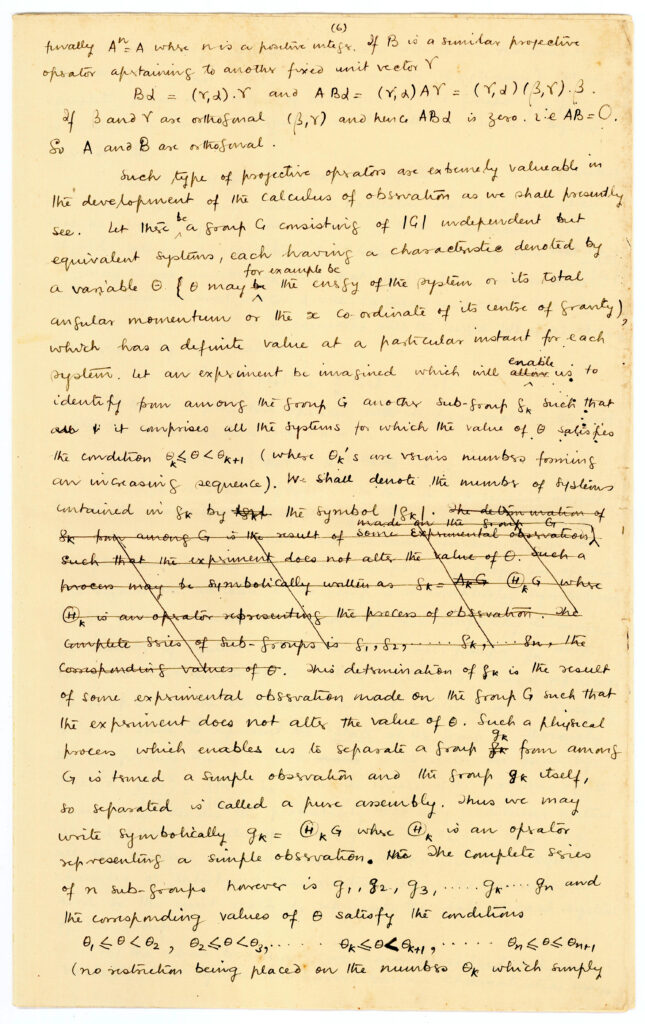
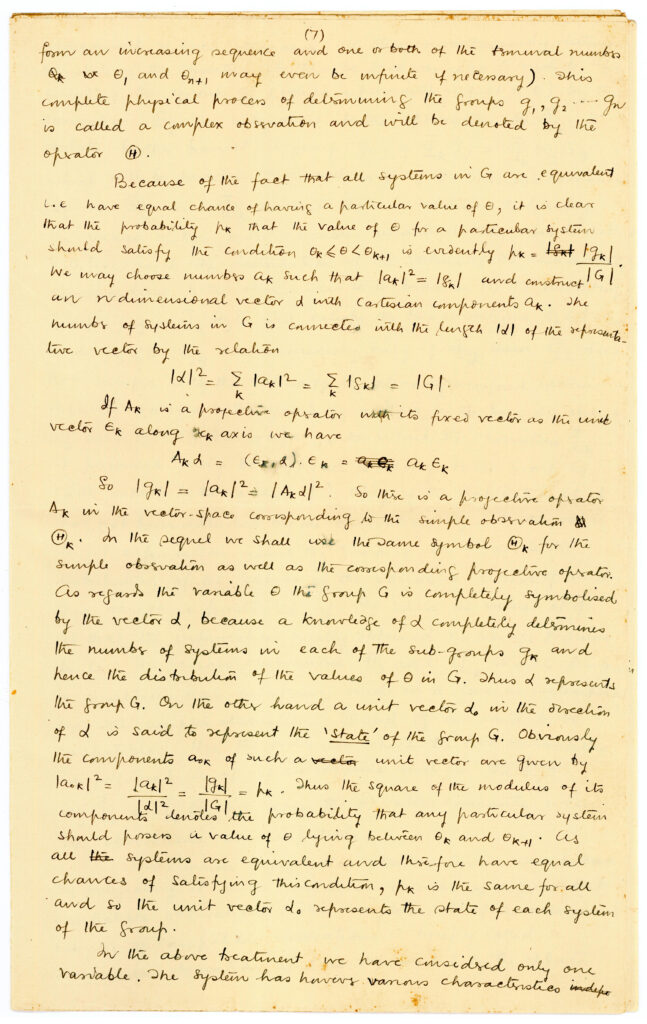
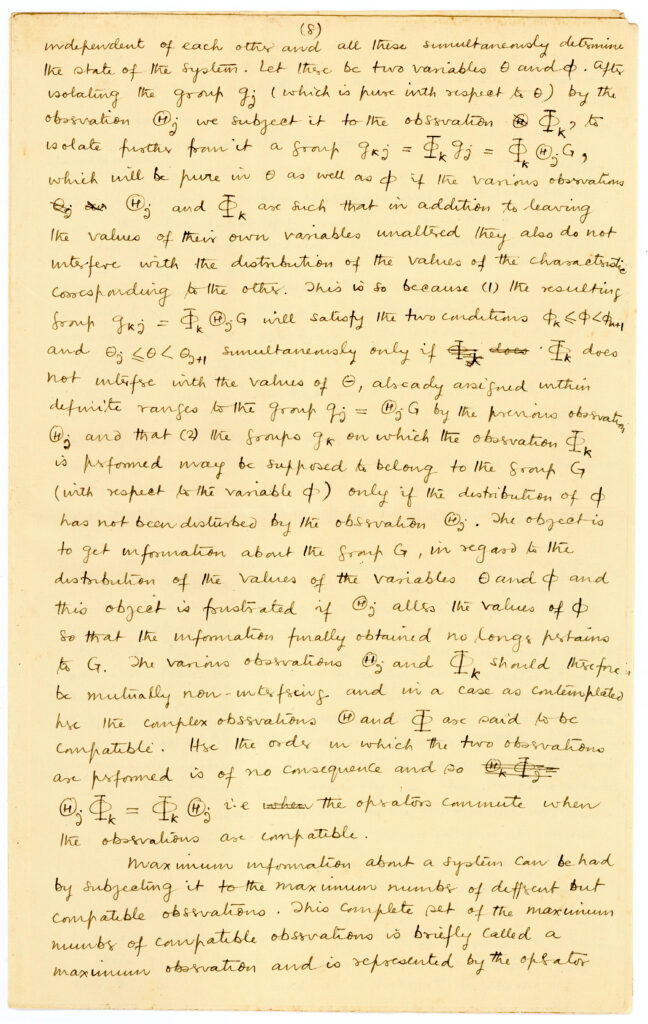
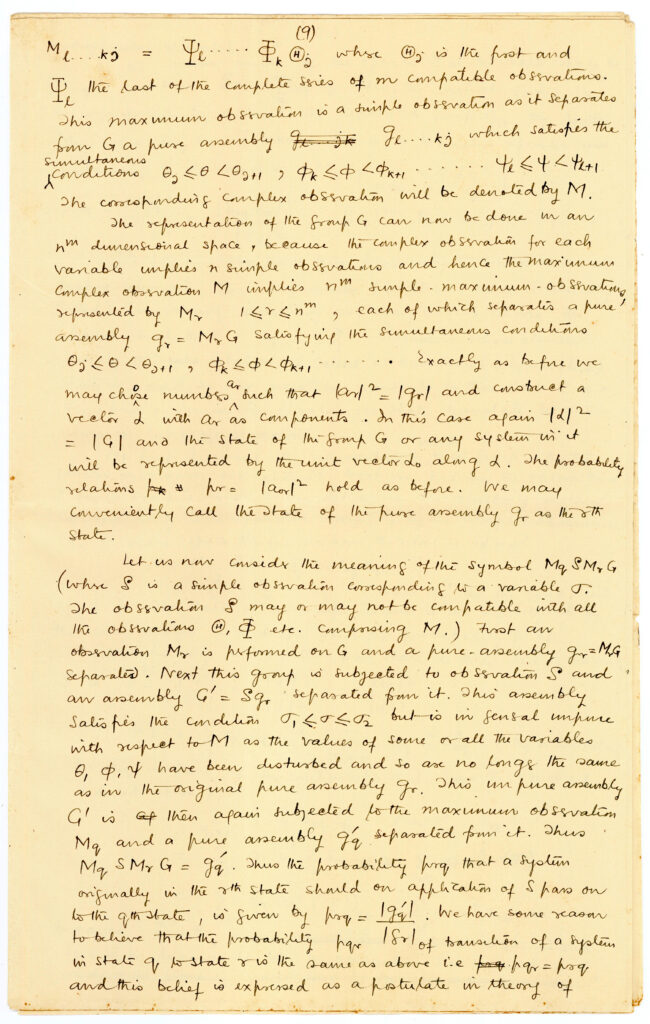
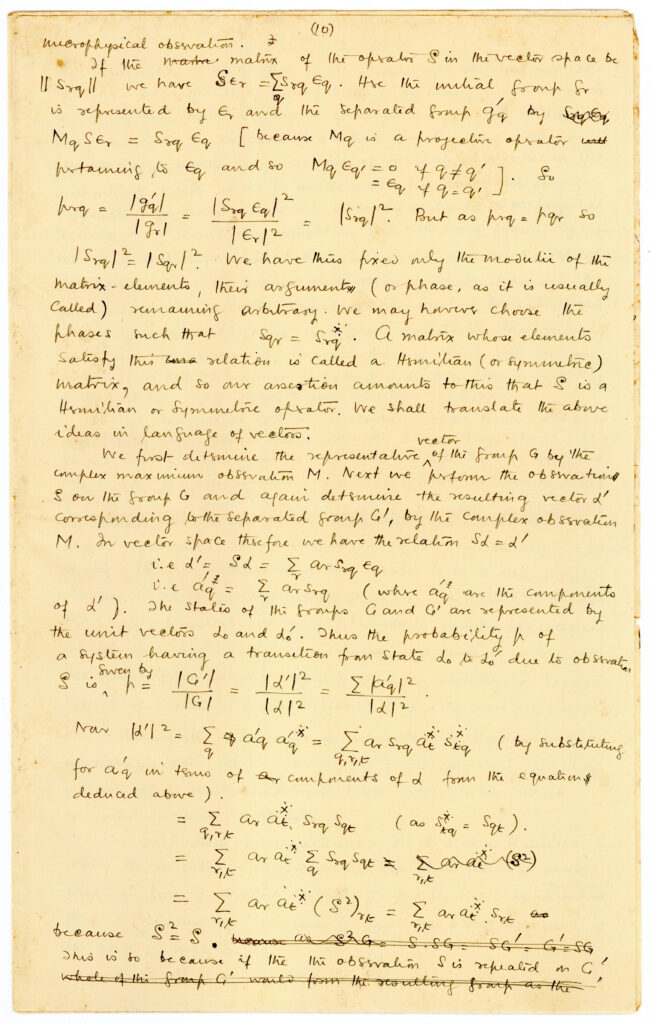
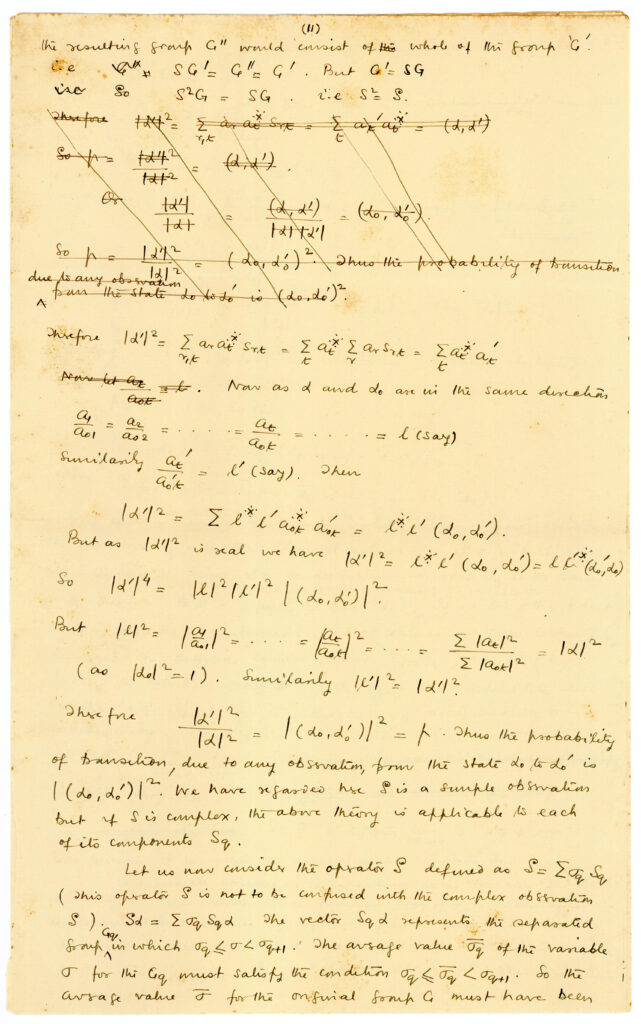
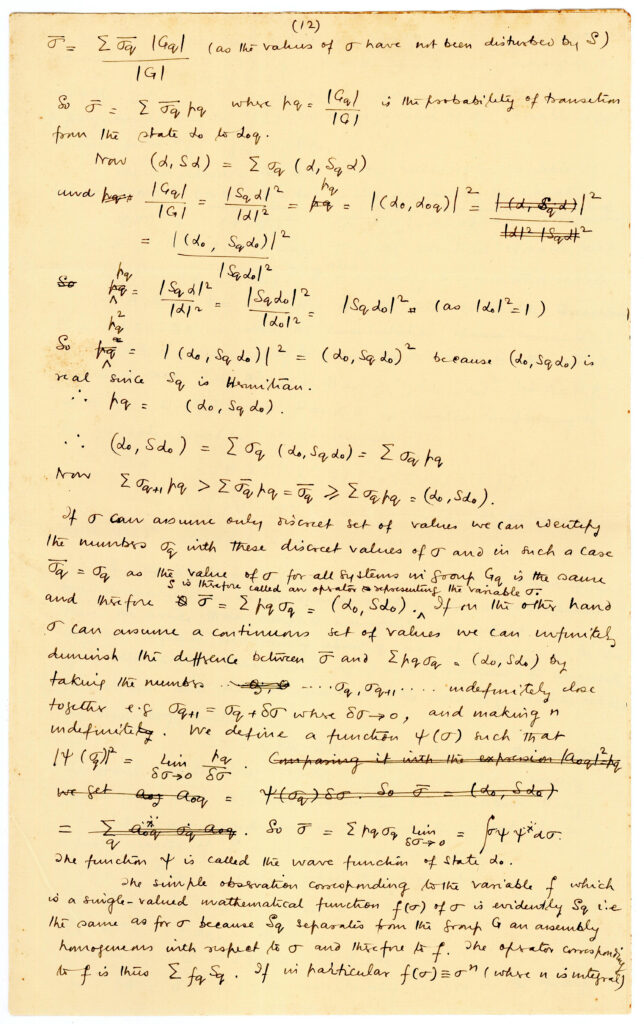
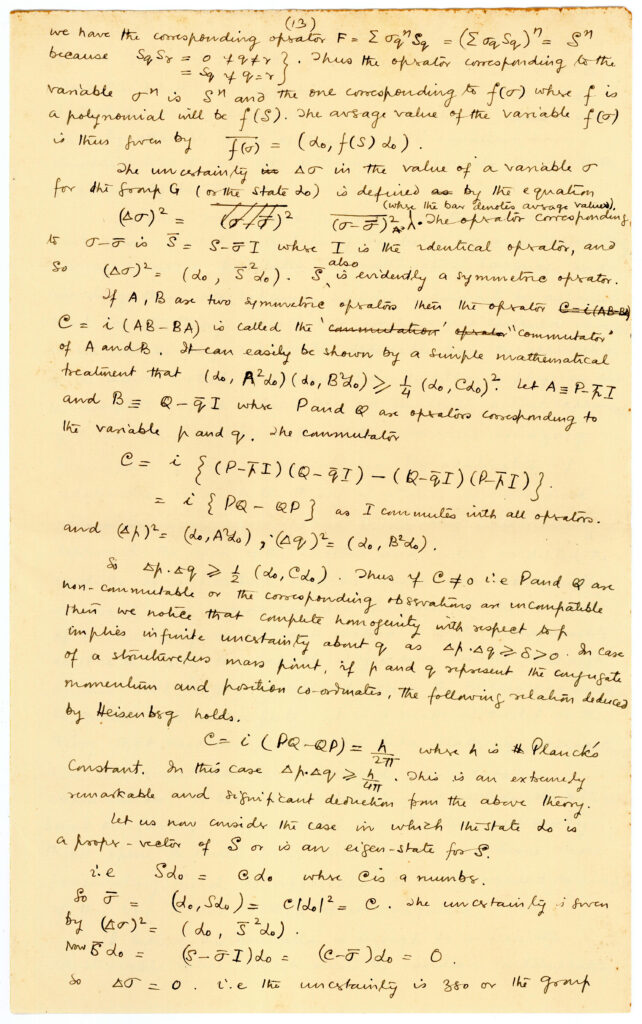
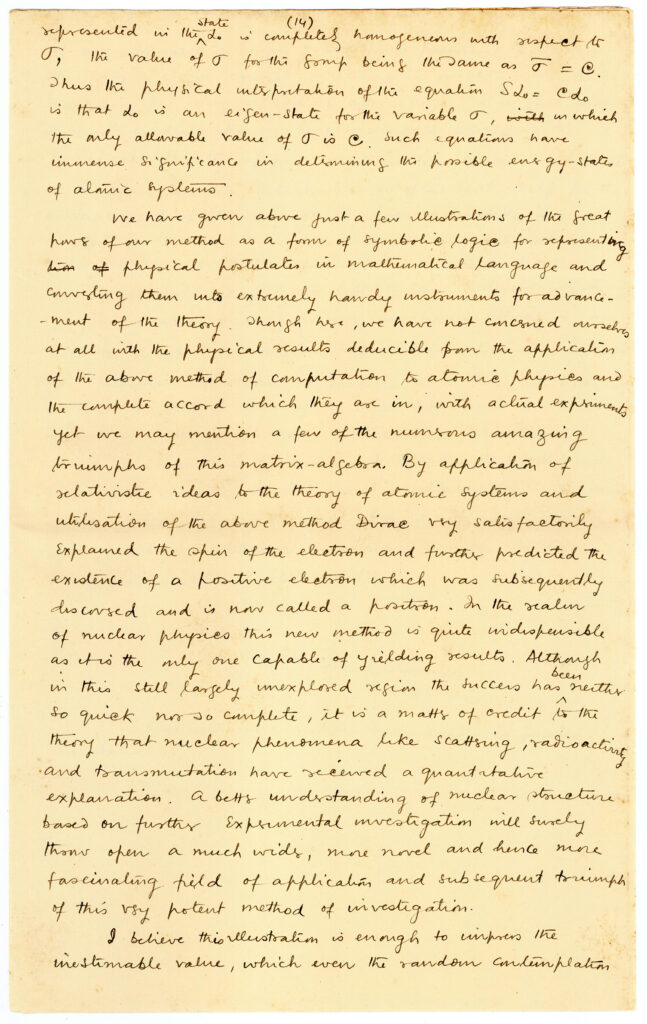
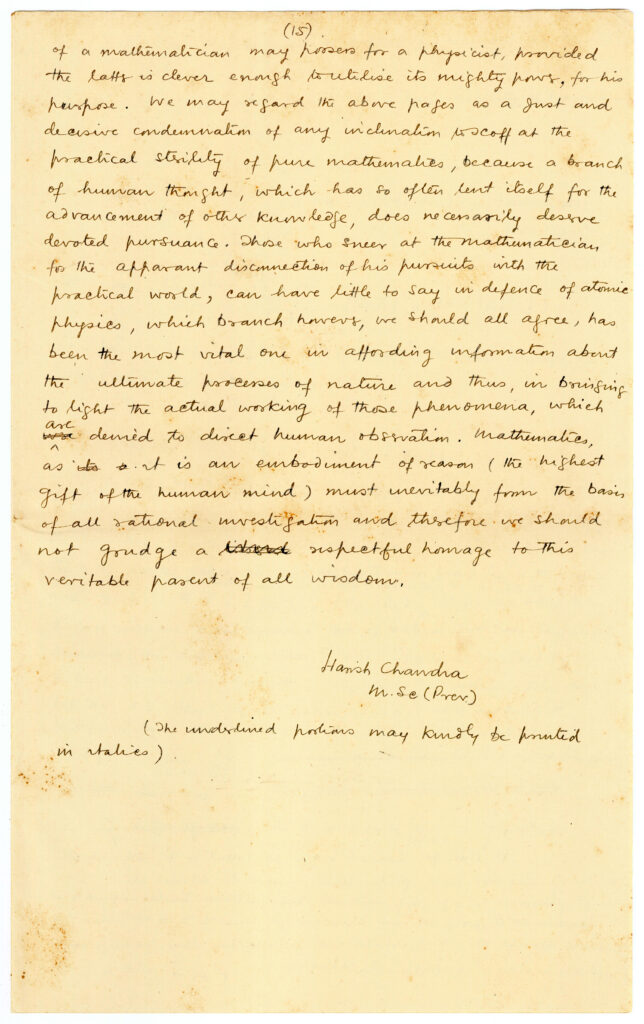
Footnotes
- Kariamanikkam Srinivasa Krishnan: His Life And Work, by D.C.V. Mallik and S. Chatterjee, published by Universities Press, ISBN: 9788173717482 (Hardcover). ↩
- Personal communication over email. ↩
- My association with Professor Dirac, In Reminiscences about a great physicist: Paul Adrien Maurice Dirac, ed. B.N. Kursunoglu and E.P. Winger, pp. 34-36, Cambridge University Press, 1990. ↩
